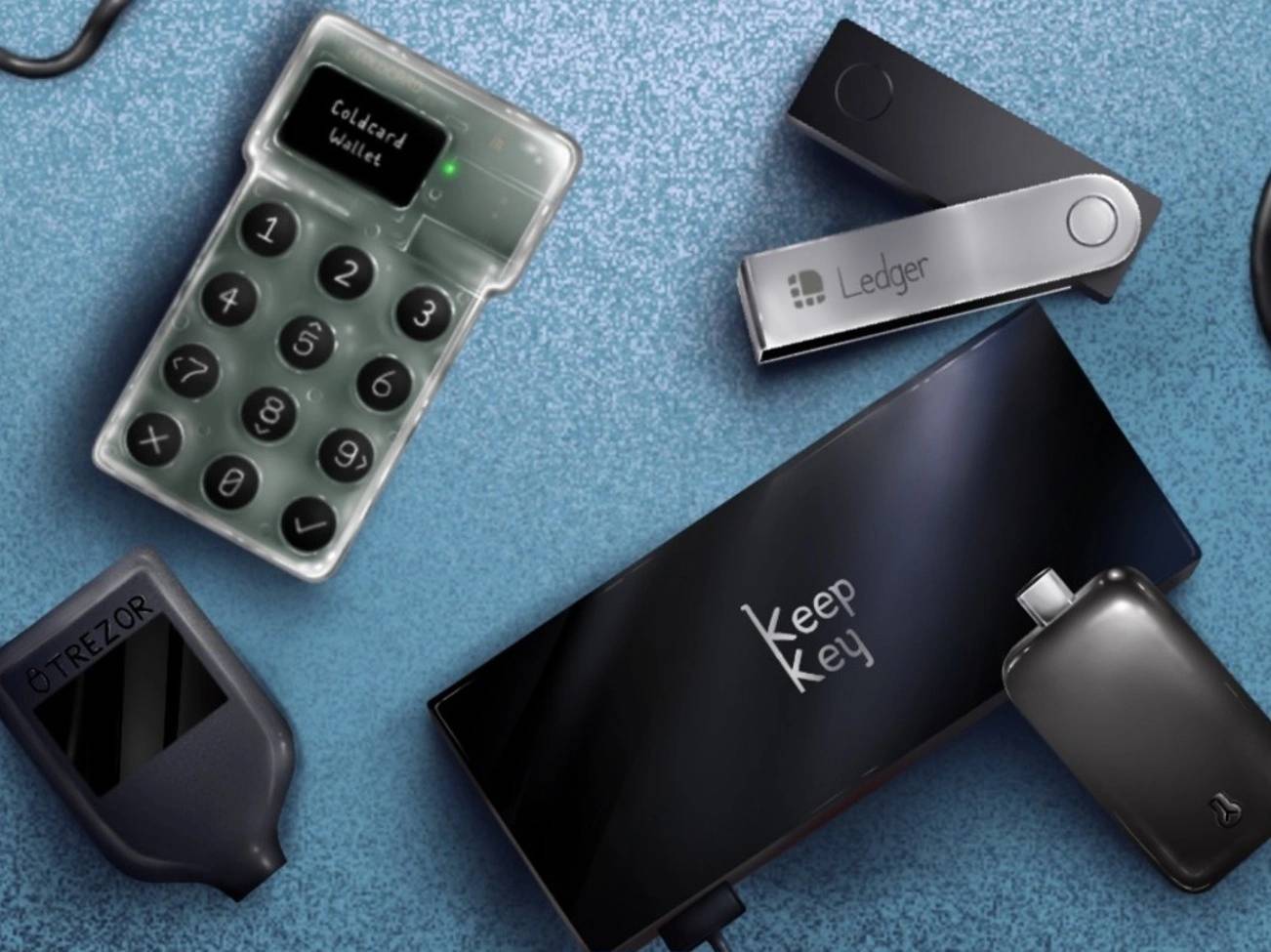위키 구독하기
Share wiki
Bookmark
Hardware Wallet
에이전트 토큰화 플랫폼 (ATP):에이전트 개발 키트(ADK)로 자율 에이전트 구축
Hardware Wallet
하드웨어 지갑은 개인 키를 오프라인으로 저장하여 해킹 및 사이버 공격에 대한 보안성을 높이는 물리적 장치입니다. 일반적인 USB 메모리와 비슷하게 생긴 콜드 월렛의 한 종류이며, 암호화폐 저장을 위해 특별히 고안되었습니다. 이 지갑을 사용하면 거래소 지갑에 입금하는 대신 지갑에서 직접 거래할 수 있습니다.[1][2]
개요
암호화폐 하드웨어 지갑은 사용자의 암호화폐 자산 개인 키를 안전한 칩에 저장하는 장치입니다. 사용자는 키를 온라인 위협에 노출시키지 않고도 암호화폐에 접근하고 관리할 수 있습니다. 암호화폐 하드웨어 지갑은 인터넷에 연결되지 않기 때문에 콜드 월렛이라고도 합니다.
하드웨어 지갑을 사용하면 하드웨어 지갑의 블록체인 연결을 용이하게 하는 간단한 소프트웨어 구성 요소인 "암호 브리지"를 사용하여 장치 내에서 직접 트랜잭션에 서명합니다. 사용자가 하드웨어 지갑을 PC에 연결하면 암호 브리지는 서명되지 않은 트랜잭션 데이터를 장치로 보냅니다. 그러면 하드웨어 지갑 소유자는 개인 키를 사용하여 트랜잭션에 서명하고 브리지로 다시 보내며, 브리지는 이후 최종 트랜잭션으로 전체 블록체인 네트워크에 브로드캐스트합니다. 중요한 점은 이 과정에서 사용자의 개인 키가 하드웨어 지갑 외부로 유출되거나 전송되지 않는다는 것입니다.[3][2]
주요 기능
- 오프라인 저장: 사용하지 않을 때는 지갑이 인터넷에서 분리되어 온라인 해킹 시도에 대한 저항력을 갖습니다. 이 콜드 스토리지는 사이버 공격 위협에 대한 주요 방어 수단입니다.
- 보안 요소: 하드웨어 지갑에는 암호화 키를 보호하도록 특별히 설계된 하드웨어 구성 요소가 통합되어 있습니다. 이러한 칩은 조작이 어려워 악의적인 행위자가 지갑의 보안을 손상시키기 어렵습니다.
- PIN 또는 암호 보호: 이 보안 계층은 장치가 잘못된 사람의 손에 들어가더라도 무단 액세스가 거의 불가능하도록 합니다.
- 백업 및 복구: 하드웨어 지갑은 일반적으로 12개 또는 24개 단어로 구성된 복구 시드 또는 니모닉 구문을 제공합니다. 이 시드 구문을 사용하면 새 장치에서 자금에 대한 액세스를 복원할 수 있습니다.
- 트랜잭션 확인: 하드웨어 지갑은 일반적으로 사용자가 장치 화면에서 트랜잭션을 확인하고 승인하도록 요구합니다. 이 단계는 사용자가 자금을 완전히 제어하고 최종화되기 전에 각 트랜잭션을 검토하고 확인할 수 있도록 합니다.
유형
주요 및 기본적인 하드웨어 지갑 유형은 다음과 같습니다.[5][8]
- USB 기반 하드웨어 지갑: 가장 일반적인 유형의 하드웨어 지갑은 USB를 통해 컴퓨터 또는 모바일 장치에 연결하는 작고 휴대 가능한 장치입니다. Ledger Nano S, Ledger Nano X, Trezor Model T 등이 있습니다.
- 블루투스 하드웨어 지갑: 블루투스 하드웨어 지갑은 컴퓨터 또는 모바일 장치에 무선 연결을 제공하여 호환성 및 사용 편의성 측면에서 향상된 유연성을 제공합니다. Ledger Nano X가 그 예입니다.
- 스마트 카드 기반 하드웨어 지갑: 스마트 카드 형태로 설계된 하드웨어 지갑은 신용 카드 또는 보안 토큰과 비슷합니다. 일반적으로 카드 리더를 사용하여 암호화폐 자금에 액세스합니다. CoolWallet S 및 Cobo Vault와 같은 지갑이 있습니다.
- 금속 시드 저장소: 전통적인 하드웨어 지갑은 아니지만, 복구 시드(니모닉 구문)를 안전하게 저장하도록 특별히 설계된 물리적 장치입니다. 금속 또는 기타 견고한 재료로 만들어져 복구 시드를 물리적 손상, 물 및 화재로부터 보호합니다. CryptoSteel 및 Billfodl이 그 예입니다.
- 페이퍼 월렛: 일부 하드웨어 지갑 제조업체는 하드웨어 지갑을 보완하는 페이퍼 월렛 백업 솔루션을 제공합니다. 이러한 페이퍼 월렛에는 하드웨어 지갑을 구성하거나 자금을 검색하기 위해 스캔할 수 있는 QR 코드가 있습니다. 개인 키가 오프라인 상태로 유지되므로 보안 계층이 추가됩니다. Ledger Nano X와 Ledger의 "Crypto Asset Recovery Pack"이 그 예입니다.
- 모바일 하드웨어 지갑: 여러 하드웨어 지갑 제조업체는 제품의 모바일 버전을 출시하여 사용자가 스마트폰을 안전한 하드웨어 지갑으로 변환할 수 있도록 했습니다. 이러한 모바일 하드웨어 지갑은 일반적으로 전용 모바일 앱과 함께 제공됩니다. Ledger 하드웨어 지갑과 함께 제공되는 Ledger Live 모바일 앱이 그 예입니다.
- 다중 서명 하드웨어 지갑: 하드웨어 지갑은 다른 지갑과 함께 작동하여 다중 서명 지갑을 만들도록 설계되어 추가적인 보안 계층을 추가합니다. 사용자는 일반적으로 트랜잭션에 서명하기 위해 여러 개의 하드웨어 지갑이 필요하므로 단일 손상된 장치가 자금에 액세스하기가 더 어렵습니다. 다중 서명 기능은 일부 표준 하드웨어 지갑에 통합될 수 있습니다.
잘못된 내용이 있나요?
